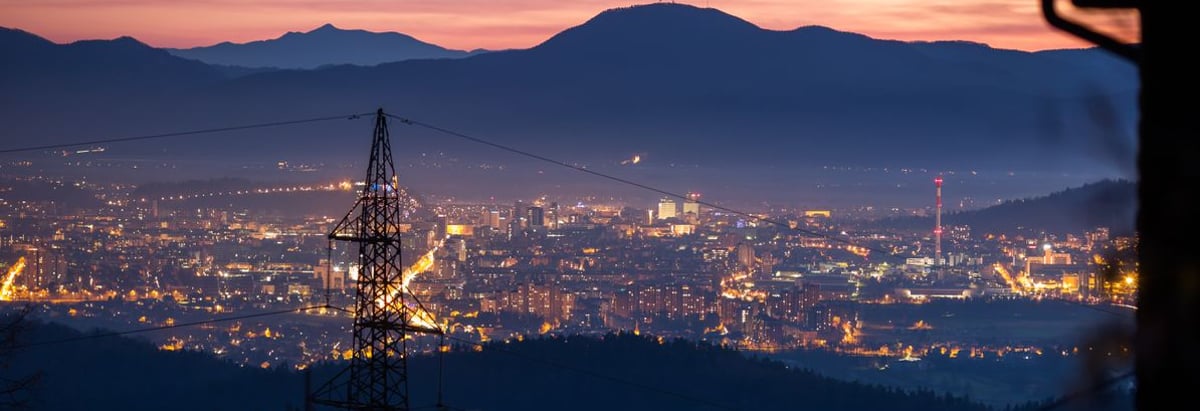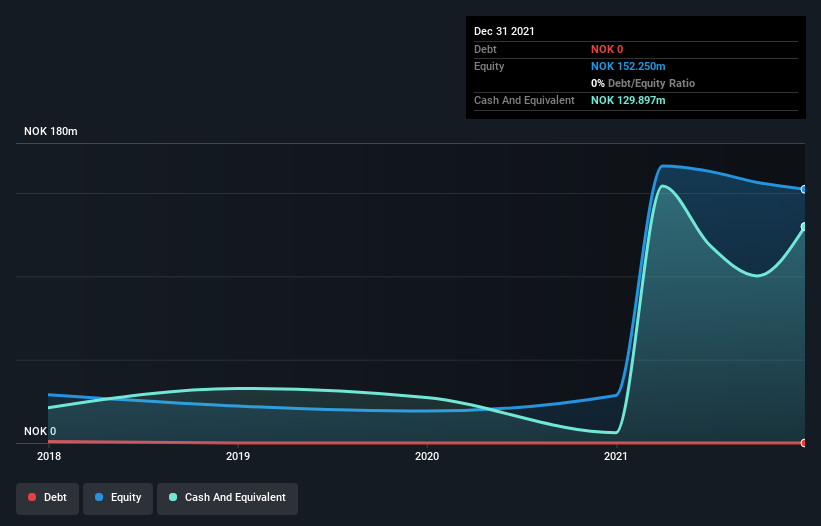
Some say volatility, rather than debt, is the best way to think about risk as an investor, but Warren Buffett famously said that 'Volatility is far from synonymous with risk.' So it might be obvious that you need to consider debt, when you think about how risky any given stock is, because too much debt can sink a company. We can see that Skandia GreenPower AS (OB:SKAND) does use debt in its business. But the real question is whether this debt is making the company risky.
Our free stock report includes 5 warning signs investors should be aware of before investing in Skandia GreenPower. Read for free now.What Risk Does Debt Bring?
Debt is a tool to help businesses grow, but if a business is incapable of paying off its lenders, then it exists at their mercy. If things get really bad, the lenders can take control of the business. While that is not too common, we often do see indebted companies permanently diluting shareholders because lenders force them to raise capital at a distressed price. By replacing dilution, though, debt can be an extremely good tool for businesses that need capital to invest in growth at high rates of return. When we think about a company's use of debt, we first look at cash and debt together.
What Is Skandia GreenPower's Debt?
You can click the graphic below for the historical numbers, but it shows that as of March 2025 Skandia GreenPower had kr182.5m of debt, an increase on none, over one year. However, because it has a cash reserve of kr115.4m, its net debt is less, at about kr67.1m.

How Healthy Is Skandia GreenPower's Balance Sheet?
We can see from the most recent balance sheet that Skandia GreenPower had liabilities of kr182.5m falling due within a year, and liabilities of kr8.53m due beyond that. Offsetting this, it had kr115.4m in cash and kr69.7m in receivables that were due within 12 months. So it has liabilities totalling kr5.99m more than its cash and near-term receivables, combined.
Of course, Skandia GreenPower has a market capitalization of kr191.8m, so these liabilities are probably manageable. But there are sufficient liabilities that we would certainly recommend shareholders continue to monitor the balance sheet, going forward.
Check out our latest analysis for Skandia GreenPower
We measure a company's debt load relative to its earnings power by looking at its net debt divided by its earnings before interest, tax, depreciation, and amortization (EBITDA) and by calculating how easily its earnings before interest and tax (EBIT) cover its interest expense (interest cover). This way, we consider both the absolute quantum of the debt, as well as the interest rates paid on it.
Skandia GreenPower has a low net debt to EBITDA ratio of only 1.2. And its EBIT covers its interest expense a whopping 30.2 times over. So we're pretty relaxed about its super-conservative use of debt. It was also good to see that despite losing money on the EBIT line last year, Skandia GreenPower turned things around in the last 12 months, delivering and EBIT of kr12m. The balance sheet is clearly the area to focus on when you are analysing debt. But it is Skandia GreenPower's earnings that will influence how the balance sheet holds up in the future. So if you're keen to discover more about its earnings, it might be worth checking out this graph of its long term earnings trend.
But our final consideration is also important, because a company cannot pay debt with paper profits; it needs cold hard cash. So it's worth checking how much of the earnings before interest and tax (EBIT) is backed by free cash flow. Over the last year, Skandia GreenPower actually produced more free cash flow than EBIT. That sort of strong cash conversion gets us as excited as the crowd when the beat drops at a Daft Punk concert.
Our View
Happily, Skandia GreenPower's impressive interest cover implies it has the upper hand on its debt. And the good news does not stop there, as its conversion of EBIT to free cash flow also supports that impression! It's also worth noting that Skandia GreenPower is in the Electric Utilities industry, which is often considered to be quite defensive. Zooming out, Skandia GreenPower seems to use debt quite reasonably; and that gets the nod from us. While debt does bring risk, when used wisely it can also bring a higher return on equity. There's no doubt that we learn most about debt from the balance sheet. However, not all investment risk resides within the balance sheet - far from it. Be aware that Skandia GreenPower is showing 5 warning signs in our investment analysis , and 1 of those can't be ignored...
Of course, if you're the type of investor who prefers buying stocks without the burden of debt, then don't hesitate to discover our exclusive list of net cash growth stocks, today.
New: Manage All Your Stock Portfolios in One Place
We've created the ultimate portfolio companion for stock investors, and it's free.
• Connect an unlimited number of Portfolios and see your total in one currency
• Be alerted to new Warning Signs or Risks via email or mobile
• Track the Fair Value of your stocks
Have feedback on this article? Concerned about the content? Get in touch with us directly. Alternatively, email editorial-team (at) simplywallst.com.
This article by Simply Wall St is general in nature. We provide commentary based on historical data and analyst forecasts only using an unbiased methodology and our articles are not intended to be financial advice. It does not constitute a recommendation to buy or sell any stock, and does not take account of your objectives, or your financial situation. We aim to bring you long-term focused analysis driven by fundamental data. Note that our analysis may not factor in the latest price-sensitive company announcements or qualitative material. Simply Wall St has no position in any stocks mentioned.
About OB:SKAND
Skandia GreenPower
Engages in the provision of electricity and energy-saving services in Norway.
Moderate and good value.
Market Insights
Community Narratives



